Hiding Honey
bruised sloes & bow-tops
Tiny sycamore keys in the lane, 4 June 2025
Hello, and welcome to this ‘new moon’ edition of Bracken & Wrack.
The inverted commas are there because, rather than coming to you in late May as I’d intended, I’m afraid things have drifted into early June, as I’ve been adventuring again. But more of that next time :-)
Meanwhile, I thought that the best way to offer a taste of the season here in Norfolk would be to take a walk along the lane. Come with me?
How the edges have changed since I last walked out from the cottage! The dry weather of the past weeks stunted growth and yellowed stems and leaves, but last week’s downpour seems to have given the verges a fresh rush of sap and positivity. Tall nettles and alexanders already sport their seeds, proof it were needed of the ever-turning wheel.
Verge-side nettles along the lane, 4 June 2025
Today the warmth is building and it’s bright although a little overcast. Birdsong is at its height. Two pairs of goldfinches dart around the old flint wall and disappear as I set off, a gleaming blackbird alighting in their place.
It’s all strangely scentless, but I imagine the growing heat will bring out the aromas by dusk when the fragrances of elder and honeysuckle will entwine over the dusty tarmac. Not so much the gorse, which for the most part displays brown husks where gold so recently dripped its heady coconut.
The elderflowers are peaking; frothy clouds with a few umbels of tightly knotted buds waiting to unfurl their finery, each tiny blossom hiding honey. The full-grown elder leaves couldn’t be greener or plumper, despite the dryness around their roots.
The horse chestnut leaves grab my attention, begging me to witness their brief moment of glory before they inevitably succumb to the annual malady that sends each one drifting brown and crisp to the ground well before the colouring-up of other greenwood trees.
In my mind’s eye the horse chestnut leaves become a crowd of people all waving seven-fingered hands in different directions. This year, some of the leaves in each cluster seem enormous, bigger than my foot, even, rather than finger sized - unless you count giants.
Above them, standing proud, stiff conker-case beacons are already taking shape. As tiny as you can imagine, their minuscule spikes outlined against the sky look almost cute, but every day they’re building their defences.
Further along the lane in the sycamore grove, the outstretched arms of baby sycamore keys have started their rippling descent. I remind myself to make the most of those picture-perfect sycamore leaves too. In a month or two they will sicken and cover themselves in black spots and a sticky film just as they always do. The knowledge of that continuity is comforting in a way, since they always return, beautiful as ever, in the spring. Still, its a joy to see both trees stretching their June limbs green and luxurious.
And look down below, there are even tiny sloes nestled between smooth oval leaves and the wicked elfin daggers that separate them. You have to look hard to spot them, their sea-glass green just beginning to bruise.
A flash of pink sends my feet through the gap in the gorse and onto the winding heath path. A few steps in, and foxgloves magically appear in their tapering ranks. Mostly it seems the purple-mauve ones, but white as well, and here and there their pale pink lovechild which is my favourite of all.
Only the lower flowers have opened their mouths to show their speckles. All the buds, graduated like Russian dolls, rise above them in flickering spires of potential. Maybe the display is a little less exuberant than in gentler years, but foxgloves know how to live.
They’ll always show up for the dance.
The cutest baby conker-cases you’ll ever see, 4 June 2025
This time in Bracken & Wrack, we have:
An early June walk along the lane
Holding Its Secrets: an enigmatic rite at a stone circle
Whatever Makes My Soul Sing: a marsh pilgrimage part 2
The Stopping Places: a Bracken & Wrack recommendation
Joey Grey Our Way: a recipe of sorts :-)
HOLDING ITS SECRETS: an enigmatic rite at a stone circle
We keep looking at that stone beyond the circle. It’s not much above knee height but has, shall we say, presence. Clearly its position is not accidental. Where will the sun fall at midwinter solstice sunset? We try to calculate but give up. Usually named as the King Stone, this stone is also known as the Fiddler Stone since the circle, in folklore, was formed when nine maidens and the fiddler who played a merry tune for them were all turned to stone for dancing on a Sunday.
Today the circle is made up of ten stones rather than the nine that its name would suggest. Certainly, that number would lend extra enchantment to the telling and re-telling of stories about the monument. As three-times-three, nine is a magical number which occurs again and again in legend and folklore; indeed there are plenty of tales that actually feature nine maidens. Another factor may be that the conspicuous low slab was, rather amazingly, only discovered in 1977. It’s suggested that it fell there, but to me it looks as if it may have been deliberately placed, perhaps to act as an altar or as a stage for celestial events, framed on both sides by uprights.
The stone directly opposite this one is level-topped, and forms such an inviting seat that it’s the only one with a deep hollow in front of it. How many human feet, I wonder, have scuffed the ground as they paused here in reflection, or to spend companionable time with a loved one? Or, indeed, with the ghosts of this place?
Trying not to look as if we’re hovering, we wait a long time for two women to move from that spot so we can photograph the circle in its timeless entirety. They’re rooted there for ages, chatting, showing their phone screens to each other and generally looking completely at ease. I imagine their ancestors sitting in that exact same place waiting expectantly for a sign in the sky, a shadow creeping over the stone theatre. It’s been suggested that the flat stone is a later addition, but my bones say no.
We wander over to the King Stone to see how it lines up with the circle and to get better photos now that the two women have moved on. Time to check behind us for the imminent arrival of further walkers. It will probably have to be a quickly-composed shot, since the stones seem to attract people with an unseen force field, even those who appear to walk past with barely a glance.
For a moment, all is quiet. No family groups, no couples with their flasks. Standing behind the King Stone we pause, each composing a photo looking back into the circle. The light is perfect. Will anyone appear and break the illusion of solitude? Maybe even the feeling that time has slipped. After all, only the young birches betray the site as anything other than ancient.
Suddenly I hear the sound of trainers on grass. The beat of a runner’s feet. I spin around and heading towards us is a young man. He’s in standard running gear and wearing sunglasses and a baseball cap.
Passing us as if we’re invisible, he lightly touches the King Stone before running on and reaching the Nine Ladies. Barely missing a stride he makes his way widdershins around the stones, touching each in turn before reaching the upright exactly opposite the King Stone. Flinging his cap and sunglasses onto the grass in front of him the young man kneels, bows his head and embraces the top of the stone, encircling it tenderly with his arms and resting his cheek upon it.
Does he feel a warm response? The moment, unexpected as it is, takes my breath away.
Time stops. Who can say for how long?
Then the young man gets to his feet, replaces baseball cap and sunglasses and continues his circuit to the stone closest to us. The stone he’d reached first, and could so easily have chosen to honour before the one on the far side. On the way around, as we watch mesmerised, he again touches each stone in turn.
He stops at this stone that we had already dubbed the ‘birth’ stone, just as the one the young man had knelt at on the other side was already, to us, ‘death’. Who knows where those flashes of inspiration had come from? Again, the young man kneels, casts his cap and sunglasses onto the grass and emotionally embraces the stone. Back on his feet, he makes another quarter turn around the circle, back to the huge altar-stone. I’d noticed that was the only one he didn’t touch when he passed it first time around.
Now, he reaches down and gently touches the weathered surface before turning away and disappearing between the birches.
What does a spiritually or magically active person look like? There really is no way of knowing. I would never have guessed that I would stand watching this young runner, who I would otherwise barely have noticed, performing such actions. His demeanour is tender, full of emotion. Clearly there is far more going on than mere habit or arbitrary ritual.
How many secrets does the circle hold safe within its joined hands?
I’m glad that I’ll never know what happened that day. All that I can say is that for a matter of moments two paths collided, and that we witnessed and marvelled and wondered, and what were the chances of that?
As ever, that’s something you will have to ask the ancestors.
They know.
Headstone in the churchyard of St Oswald, Kirkoswald, 29 May 2025
WHATEVER MAKES MY SOUL SING: a marsh pilgrimage part 2
It was hard to tear ourselves away from the old forge and Honing Village Hall with its friendly daffodil-day welcoming committee. Quite by chance we had been pointed in the direction of homemade cakes and coffee and experience has shown that such potent messages from the gods should never be ignored. But it was time to leave if we were to make progress and get as far along the trail as we could before nightfall.
Originally we’d set our sights on finding a camping spot close to Stalham, so we expected to be keeping an eye out for secluded hedgerows or banks of trees just outside the town. But the old railway line through East Ruston heading towards Stepping Stone Lane actually slipped by faster than we thought it would. (And also, it must be said, there was the anticipation of a pint of shandy in The Swan to be reckoned with.)
Even if we had to back-track slightly to find a suitable place to pitch, we had still promised ourselves a well-earned drink at this point. `I was already a little incredulous that we had set off from the cottage and walked fully laden first to the canal, then the burial mound in Bacton Wood and now all the way to Stalham. But here we were. And as usual, our packs and staffs had provoked a certain amount of interest along the way.
All too soon it was time to make the decision. Back to one of the fields just off the Weaver’s Way from where we could dash to Tesco’s facilities in the morning? Or would it make sense to push on since we’d made such good progress? An ambitious early idea had been to camp at Hickling near the Broad - was that possible? Walking out of town towards Sutton it was hard to judge how long it might take to reach Hickling on foot. The mist, and with it the dusk, was coming down faster by the minute.
Much of this next section was on the road, never the ideal choice. It became foggier, the hedges on either side turning into featureless bands of dark. My feet were beginning to feel heavy and misty droplets made everything clammy as we followed another footpath finger sign down a grassy track beside a still-bare hedge.
By this time, my head was down and it was just a case of walking as straight a course as I could, trying not to wonder how far it was to Hickling.
Suddenly, my eyes lifted and a tall shape loomed out of the dusky haze. Of course. Sutton Windmill. I had only just been reading about this mill, learning that with its nine storeys it’s not only the highest in Norfolk but one of the tallest in all of England.
I’d actually glimpsed Sutton Mill before, but it had had a very different demeanour in the rational light of day, albeit a somewhat uncanny one. Then, it had been a bare tower stretching into the wide skies. Since then its sails had been replaced and with its vast height it looked somehow eerier, the sails seeming proportionately too small for it. The impression I had was that the mill had shot up, Alice in Wonderland style, taking its ordinary-sized sails along with it.
The sight was far more un-nerving than that of any derelict shell of a windmill I’d ever seen. And all in the liminal twilight hour when I’d been walking for hours and was shamanically tired. A slipper-chapel frisson of shock and the footpath stretched ahead once more.
If you’ve ever wondered, I can tell you that Hickling village certainly isn’t the same thing as Hickling Broad, much less the far side of Hickling Broad. By this time it was completely dark and the Greyhound pub with its cosy illuminated windows and strings of lights felt as tempting as if the White Witch’s dwarf-servant had just offered us a silver platter of Turkish Delight. But now was not the time to falter and we turned down Staithe Road whose name, at least, sounded hopeful.
It was a very long road. Quite built-up to begin with, but then the houses and gardens thinned and we made out the shapes of a community centre and orchard. That might have made a good place to pitch but it wasn’t the same as being close to the water so we had to trust that eventually the potential camping spot we’d found on the map would appear. Sure enough, five minutes later the Pleasure Boat Inn came into sight. And a very welcome sight it was too, as the whole place glowed its invitation.
Through the car park, round to the door, and in with our backpacks and staffs, blinking in the light. Newly decorated, bright and clean, the pub was perhaps a little lacking in patina but at that moment a seat and a pint of shandy seemed far more significant than aesthetics. Perched on high stools with a half-pint glass of salted peanuts, weary muscles began to relax and warmth crept back into places it had been seeping from since twilight had started to spread over the fields.
We sat, sipped and munched, almost numb as to where we might actually pitch our tent and set up camp. There was even a meal to cook (well, heat up) before we could turn in for the night. But sitting here we could put all that off. We were safe and warm.
Although the pub was quiet, a noticed a fair-sized group of friends drinking and chatting by the bar. It was as we were beginning to gather up our things that the sole woman in the group spoke to us. Long fair hair, jeans and a friendly outdoor face. Of course the ice breaker was our staffs and our packs. That’s always the way.
The conversation that ensued provided yet another welcome diversion from the upcoming practicalities. And usefully, to our relief it was established that we would probably get away with pitching on the grass by the water just beyond the pub. After all, it was dark and who would be around now, or care?
The conversation took some interesting turns but there’s one goosebumps-moment that I will always remember.
When we mentioned having once stopped for a picnic supper in the van at Horsey Mill, the woman said ‘Oh, I know Horsey well. I work there and spend a lot of time running around the marshes and fields, doing things I shouldn’t be doing’.
Intrigued, I asked her what sort of things?
Quick as a flash came the answer. ’Whatever makes my soul sing’.
A romantic vision of Gypsy life as depicted on my 1960s tin tambourine - one of the only childhood toys I’ve hung onto - here on the heath
‘…Those clothes smell’, said Prudence, wrinkling up her pretty nose. They did, but not of dirt. Gran washed them often, hanging them along the hedge, while Kizzy wrapped herself in a blanket; they smelled of the open air, of woodsmoke and a little of the old horse Joe, because she often hugged him.
Rumer Godden, The Diddakoi
My Bracken & Wrack recommendation last time was a collection of short stories from a bygone era originally written for children by Alison Uttley. If you know me you’ll know that nine times out of ten it would be a children’s book I would go for, but my pick this time is something very different. The Stopping Places: A Journey Through Gypsy Britain by Damian Le Bas is a book for adults I really enjoyed. What’s more, I gained fascinating insights about Gypsy culture past and present that I can’t imagine finding out from anyone other than someone with Damian’s background.
On the way back from the Lake District last week, as we drew closer to Penrith, road signs started appearing reminding drivers to take extra care when encountering horse-drawn vehicles. It was a few days before Appleby Horse Fair, the traditional gathering that attracts thousands of Travellers annually, and I was reminded again of the section in The Stopping Places where Damian and his wife Candis attend the Fair, not in a horse-drawn wagon but in a Ford Transit van. It’s a vivid account.
Of course, we kept looking all around for glimpses of those wagons or other Gypsy vehicles converging on Appleby. Look, a bow-top wagon! Ohhh it’s the curved top of an oil tanker :-)
As we paused to cook and boil water over fire during the journey, I did wonder whether people eyed us warily, distrustful as many are of the Traveller community and with our set-up giving every sign of being part of the contingent on its way to Appleby Fair. Even the singing and ukulele: in The Stopping Places we hear that playing the spoons, singing, and step-dancing on a board (we haven’t tried that one yet) are still commonly practised as Gypsy entertainment.
As far as I know, I have no Romani heritage (although the Cambridgeshire Fens, home of my maternal ancestors, was much frequented by Travelling families, so who knows??). But as well as being very interesting in their own right, I found some of the practices Damian describes to be hugely inspiring even to someone just messing about in a small black van.
From the book’s front cover:
In a bid to understand his Gypsy heritage, the history of Britain’s Romanies and the rhythms of their lives today, Damian sets out on a journey to discover the atchin tans or stopping places - the old encampment sites known only to Travellers. Through winter frosts and summer dawns, from horse fairs to Gypsy churches, neon-lit lay-bys to fern-covered banks, Damian lives on the road, somewhere between the romanticised Gypsies of old, and their much-maligned descendants of today.
I think as much as anything it was this feeling of liminality I enjoyed; finding the edges of identity and coming away from the book wanting to start reading it all over again. When I do, I know I will find even more rich detail to savour. Meanwhile, we have started cooking nearly all our meals on the road in a pan hanging on a tripod over a little solo-stove fire fuelled by pine cones and small sticks mainly gathered along the way. We’ve been finding our own atchin tans to return to and even, by trial and error, developing our own vegan iteration of a ‘Joey Grey’:
I get out my stove and pan and with my little knife start to chop onions into a pot for a ‘Joey Grey’, a staple dinner of Nan’s. I often try to recreate it but somehow it’s never quite right. ‘Joey Grey’ is a name that Romanies use for their traditional soup, but no two families of Travellers seem to agree as to exactly what should go in it. We make ours by frying chopped streaky bacon with onions, then adding water and a tin of tomatoes, sliced potatoes and mushrooms, simmered with a bit of salt and pepper and served with fresh white buttered crusty bread.
Damian Le Bas, The Stopping Places
JOEY GREY (fish van style)
This is a very adaptable recipe. In fact you might not even call it a recipe, but at least I hope you may be inspired to create your own signature Joey Grey. Really, it’s a set of tips or guidelines prompted by our initial experiments in cooking over fire.
Now, our fire is tiny and needs a lot of feeding, so obviously it’s a very different kettle of fish (so to speak) from a lovely big glowing fire over which a cauldron full of stew can be left simmering hour after hour, growing ever richer in flavour. Quick-cooking vegetables work best, in quite a liquid base to - hopefully - prevent the mixture catching underneath before it’s properly cooked.
We’ve tried several one-pot meals, literally throwing together ingredients we had on hand in the van. These have included very tasty curries whose coconut milk and peanut butter constituents sadly tend to encourage the aforementioned sticking on the bottom of the pan. With that in mind, I think the most successful version was probably this one, which - with variations according to availability - I hereby nominate as our very own Joey Grey. I was glad to read afterwards that Damian’s Joey Grey also includes an onion and a tin of tomatoes: we’re in good company :-)
Chop and fry one onion and a couple of cloves of garlic in olive oil. Add other quick cooking vegetables in tiny slices - this time we used a leek, a red romano pepper, a few mushrooms and an aubergine chopped very small. If you use carrots or celery you’ll need to chop them very finely as they take longer to become soft than the other vegetables.
As the vegetables begin to cook, add a splash or two of water and put the lid on the pan so that they partly steam/braise - this speeds things up and helps prevent charring. When the volume goes down, add a tin of tomatoes and a tin of any pulse for protein and texture - we used red kidney beans on this occasion.
Stir in any seasonings you fancy - we put in a good shake of dried herbs and a spoonful of bouillon powder (or use a stock cube) but if you have salt and pepper or some chilli flakes (next time!) they would be great additions.
Pour in some water, preferably already hot so as not to cool things down too much. (We boil the Kelly kettle at the same time, but that’s another story.) You may not want much more liquid if you see this as a stew rather than a soup.
Now be as patient as you can ;-) With a fire like ours you’re doing well if you can let the whole thing bubble away for five minutes or so. My tip is to pass the time creatively; that way it flies by. With us, the ukulele usually comes out and a song or two works well for timing the meal - ‘let’s dish up after one more song’ :-)
And speaking of dishing up - when the time comes, divide your Joey Grey between two bowls and enjoy either on its own or with bread - we sometimes have naan bread with this sort of meal.
Of course, everything tastes better out of doors! If you try this, do let me know how you get on.
PS: You can, of course, also cook this in a pan on a camping gas stove or indeed in a kitchen.
Keswick, Cumbria, 29 May 2025
Until next time.
With love, Imogen x

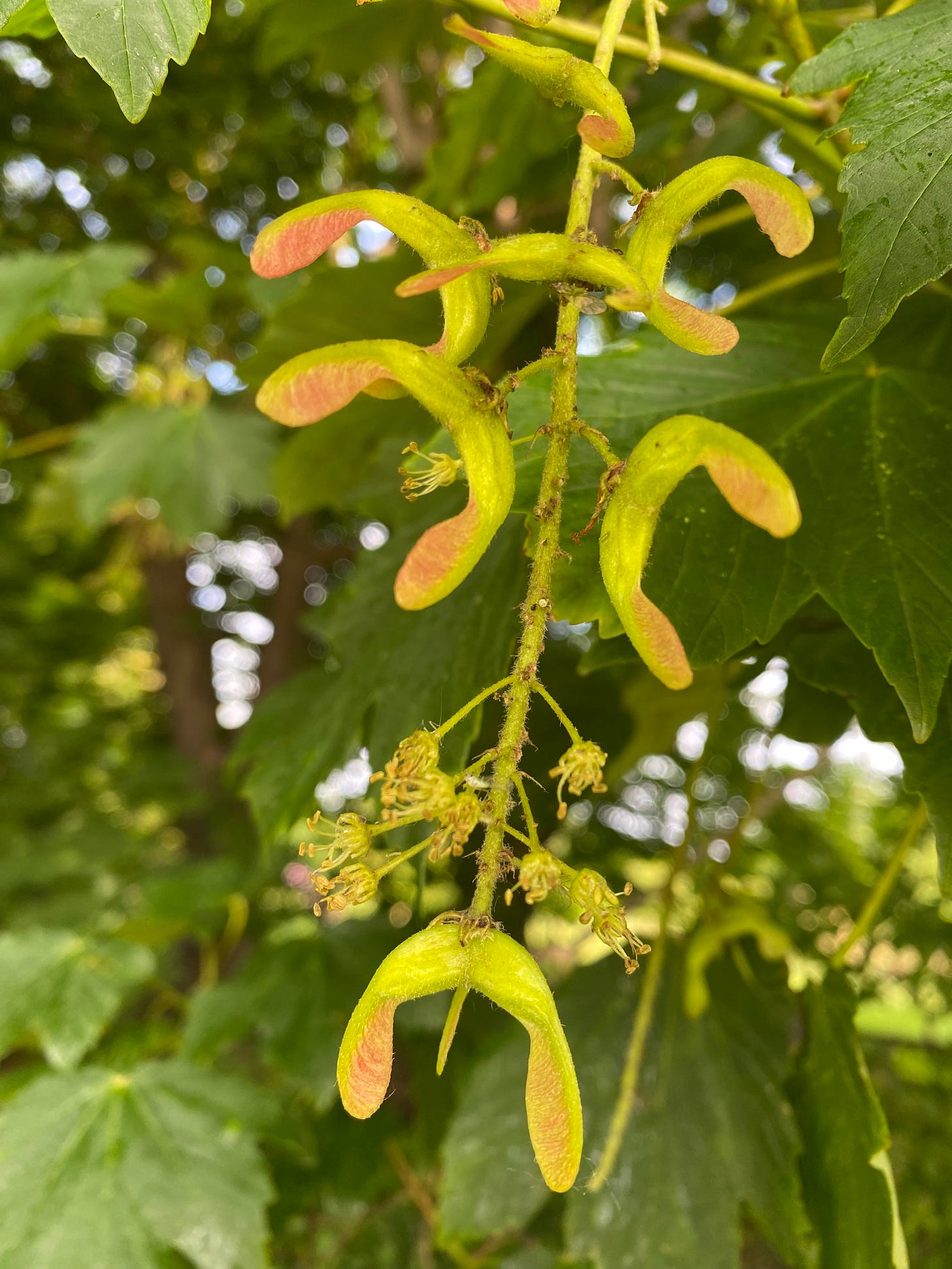
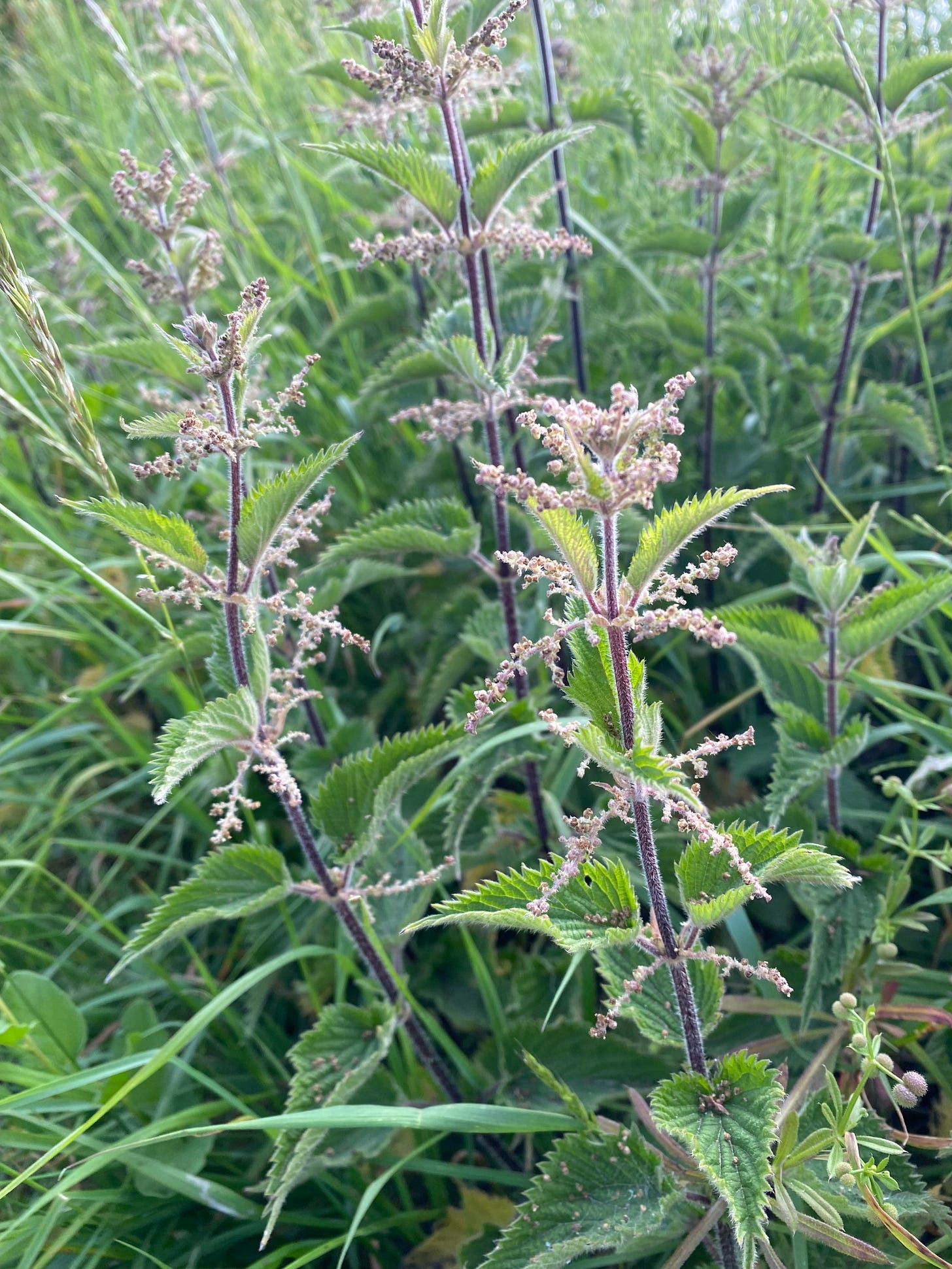
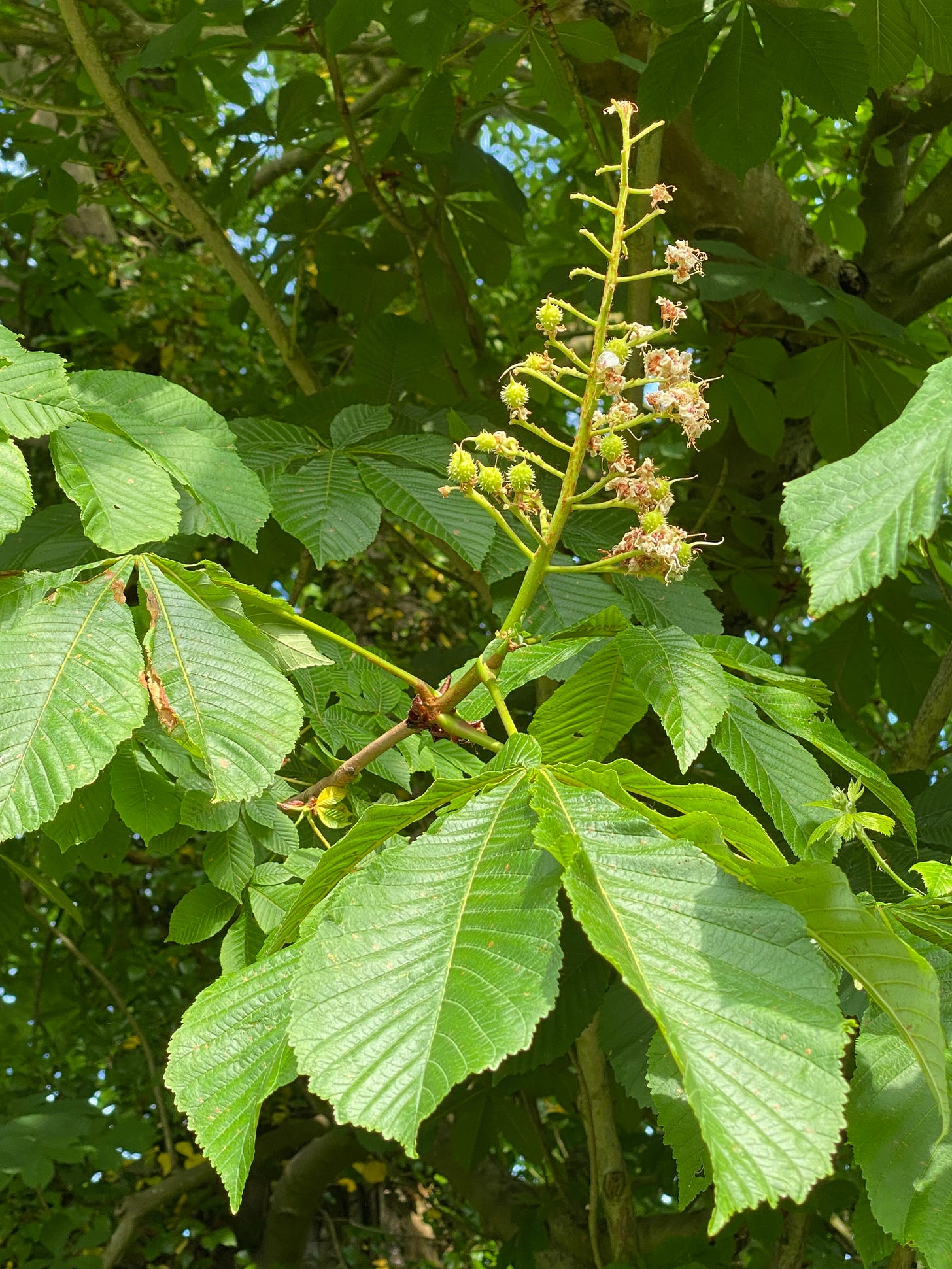
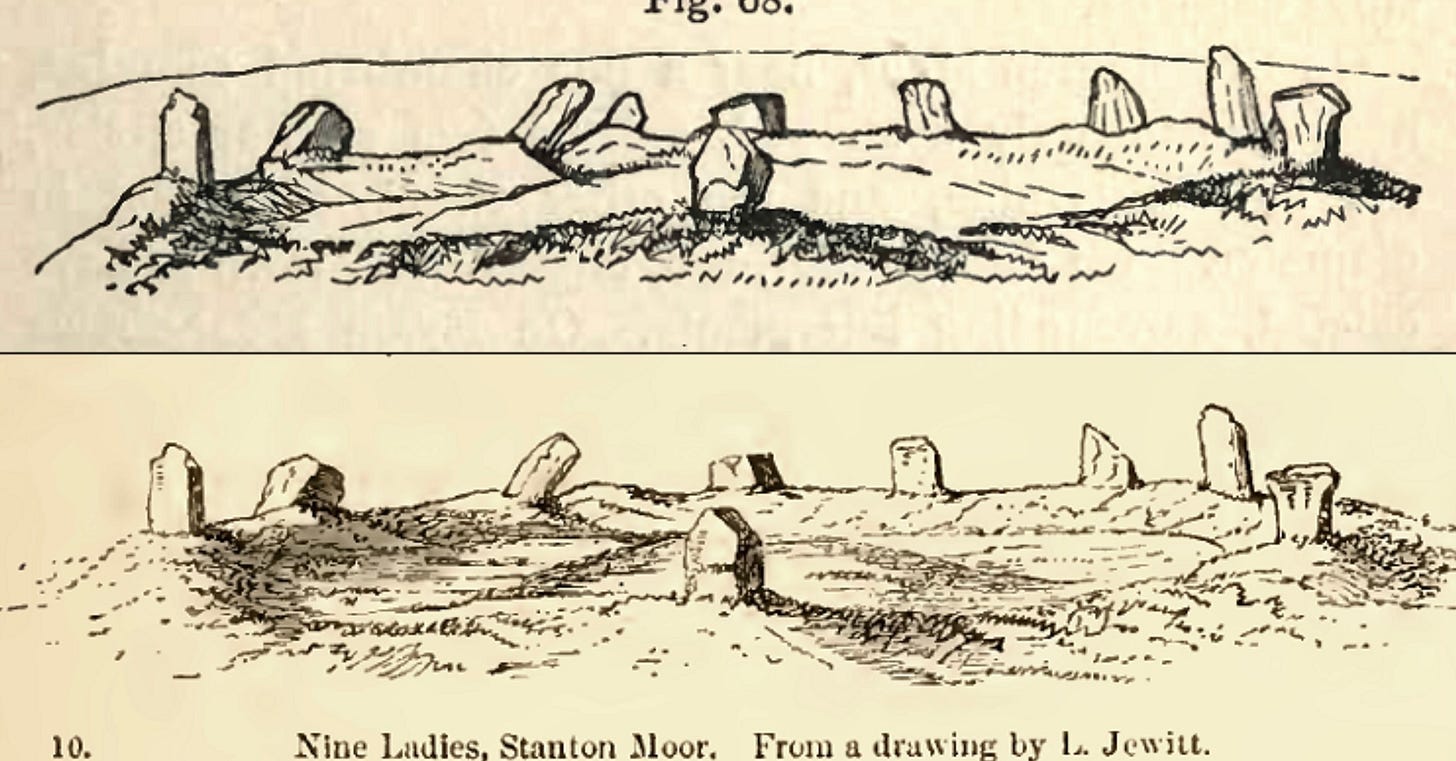
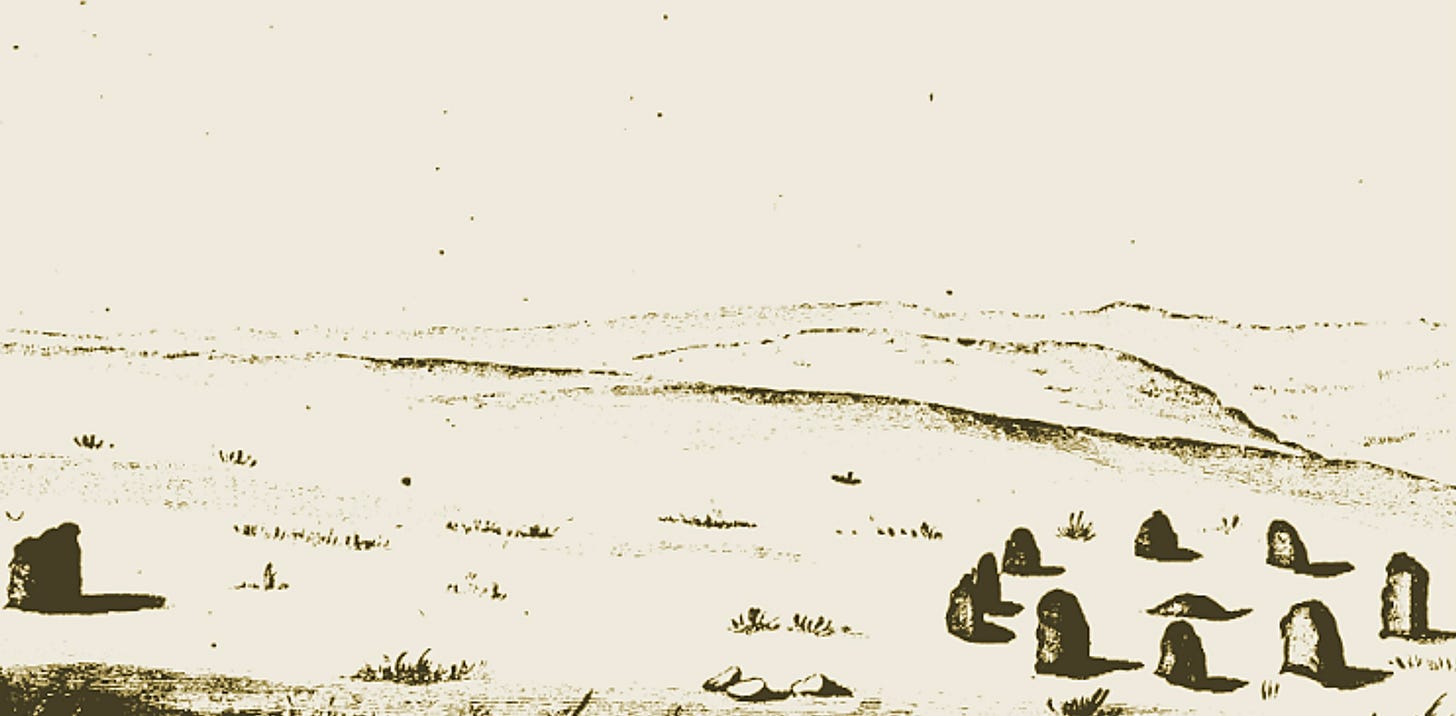
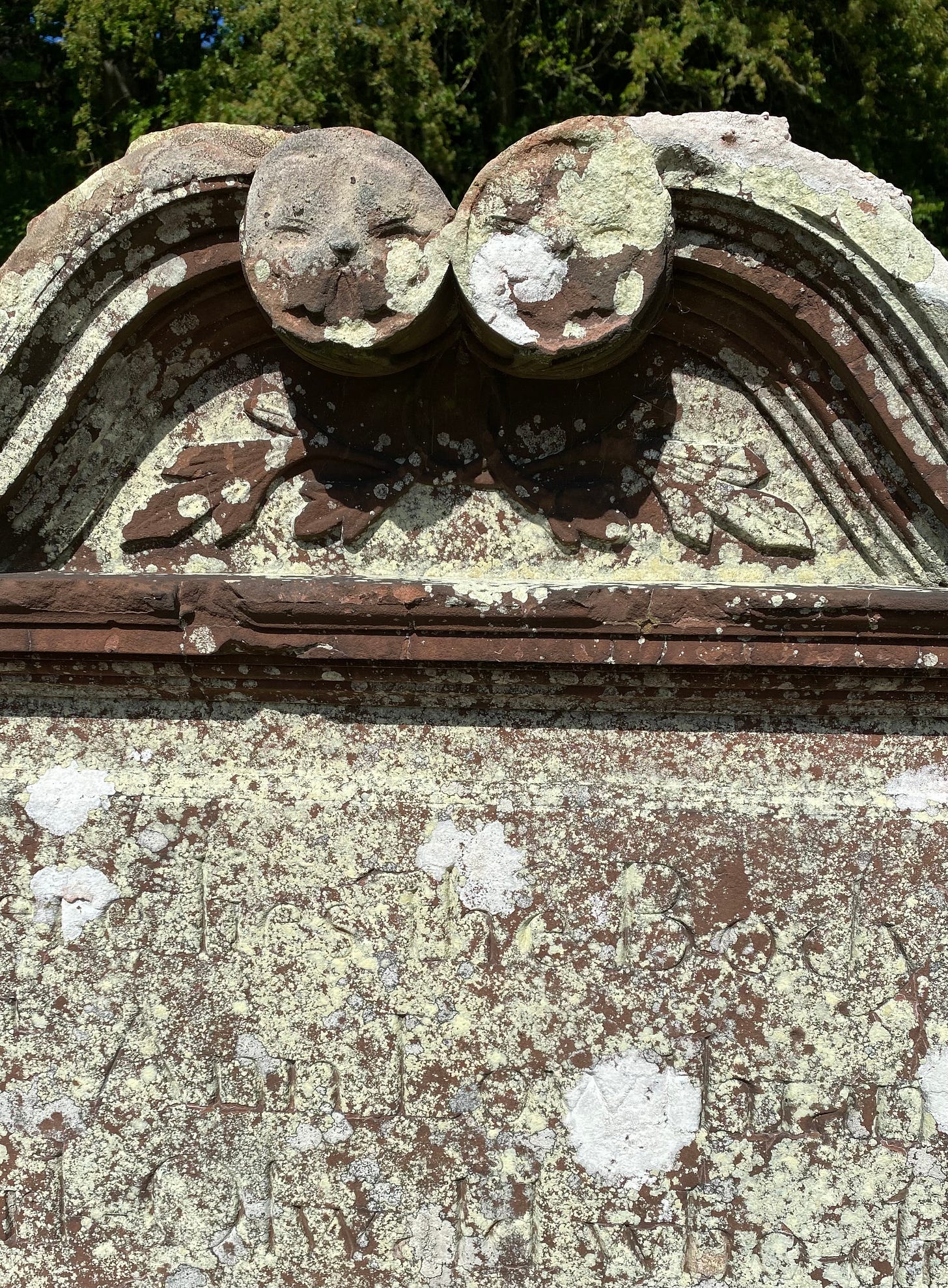
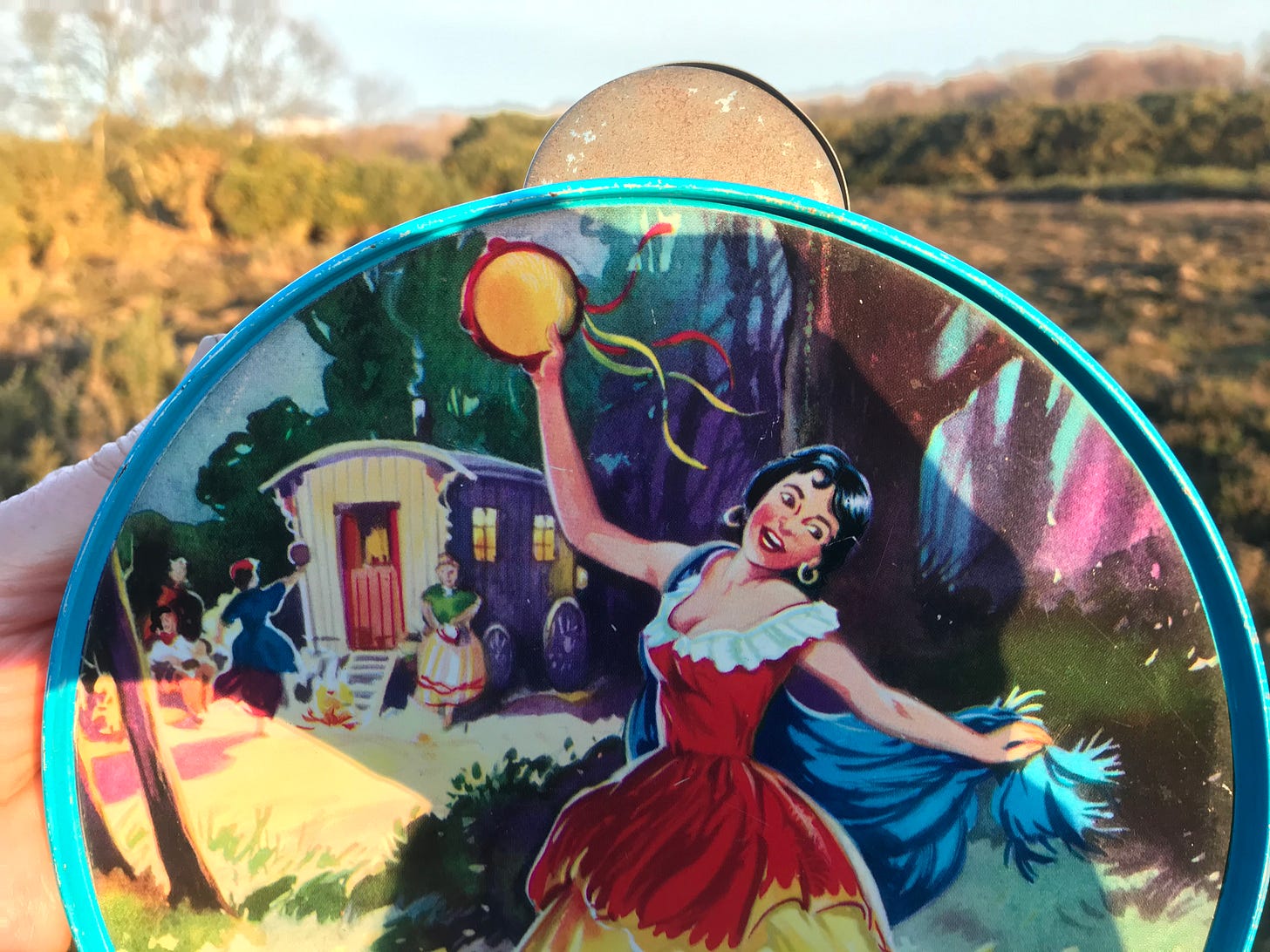
Such fascinating detail, and so well told!
I really enjoy your stories, Imogen, thank you. What a surprising encounter with that young runner!